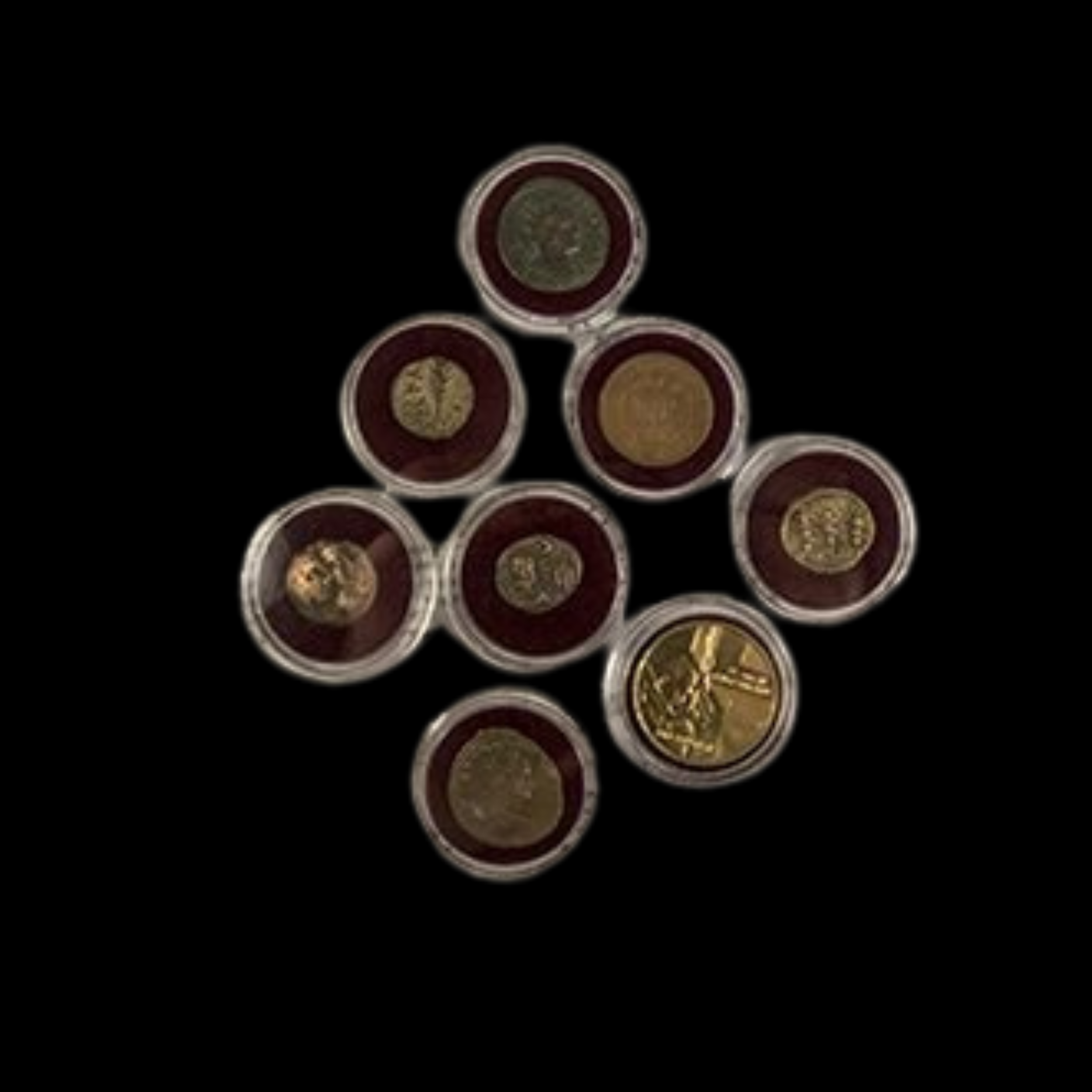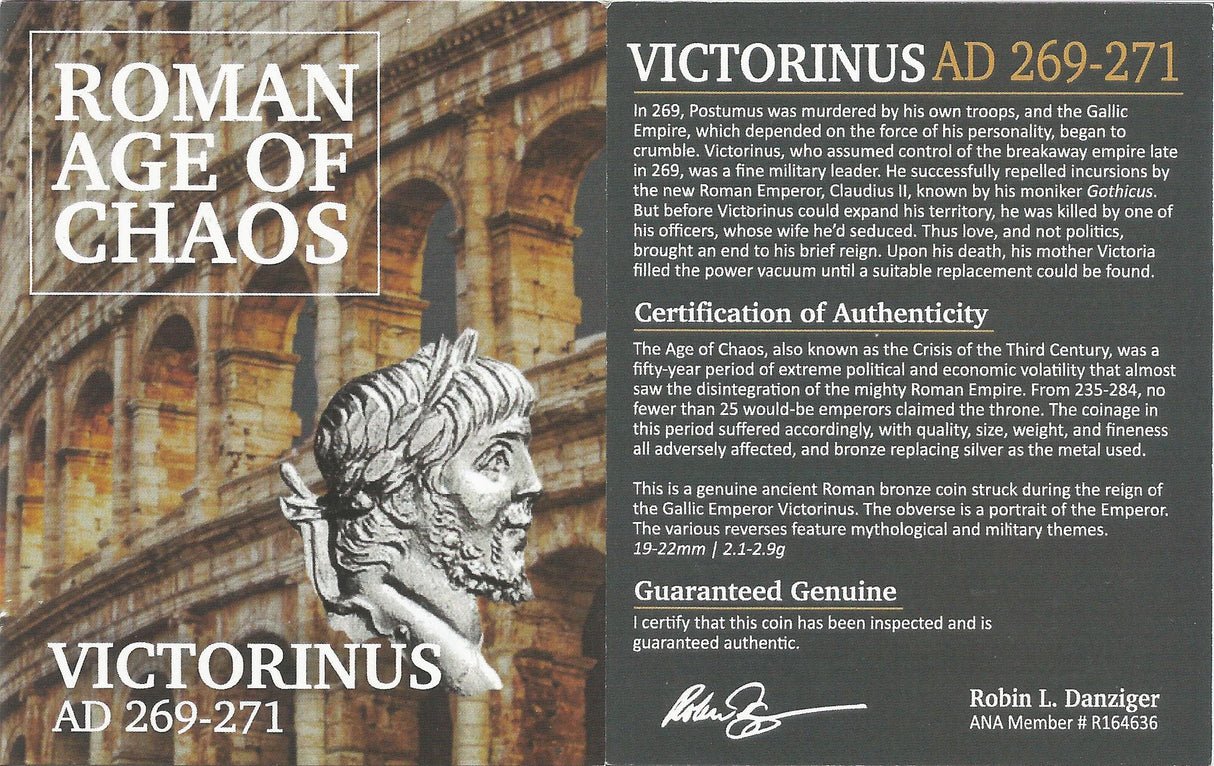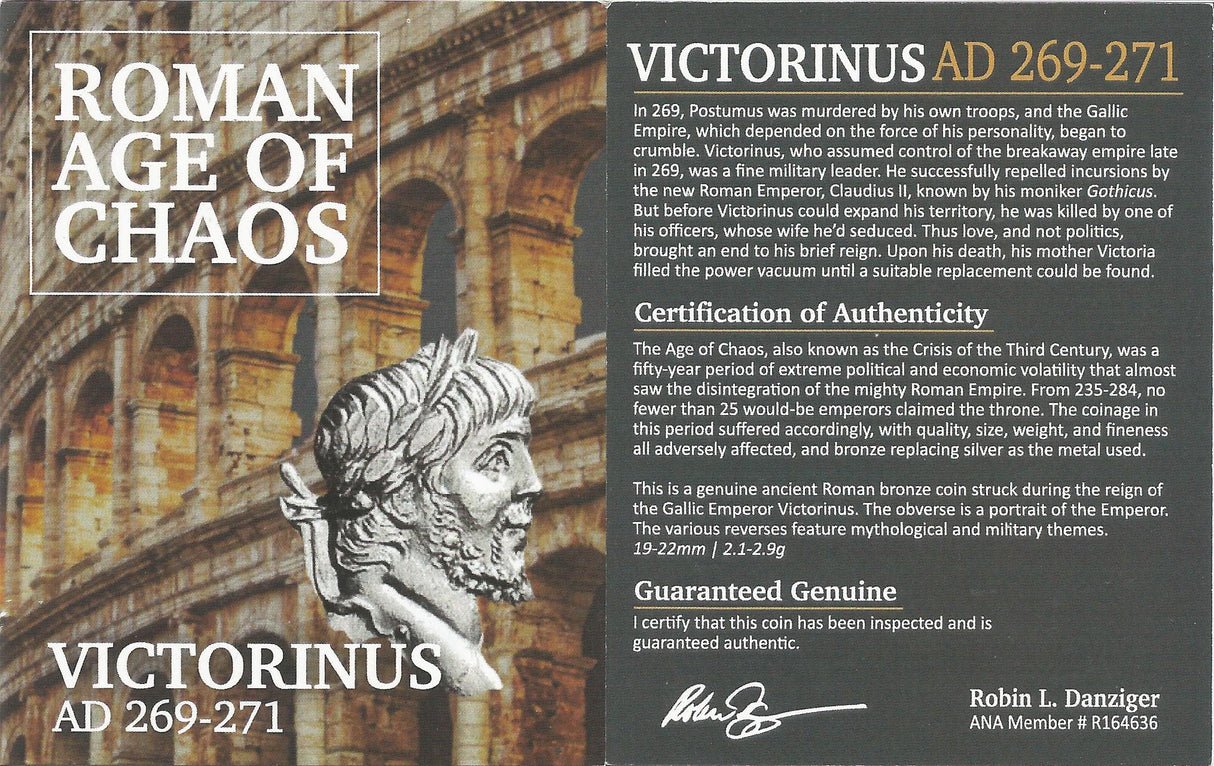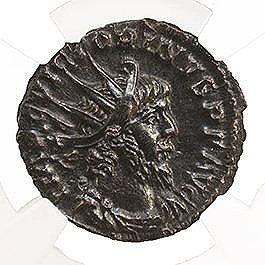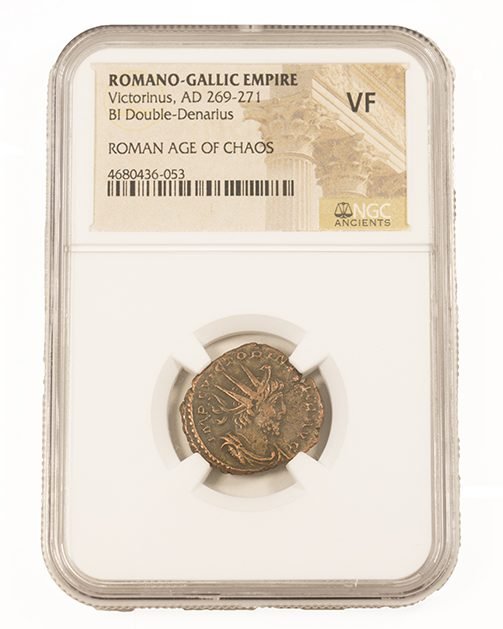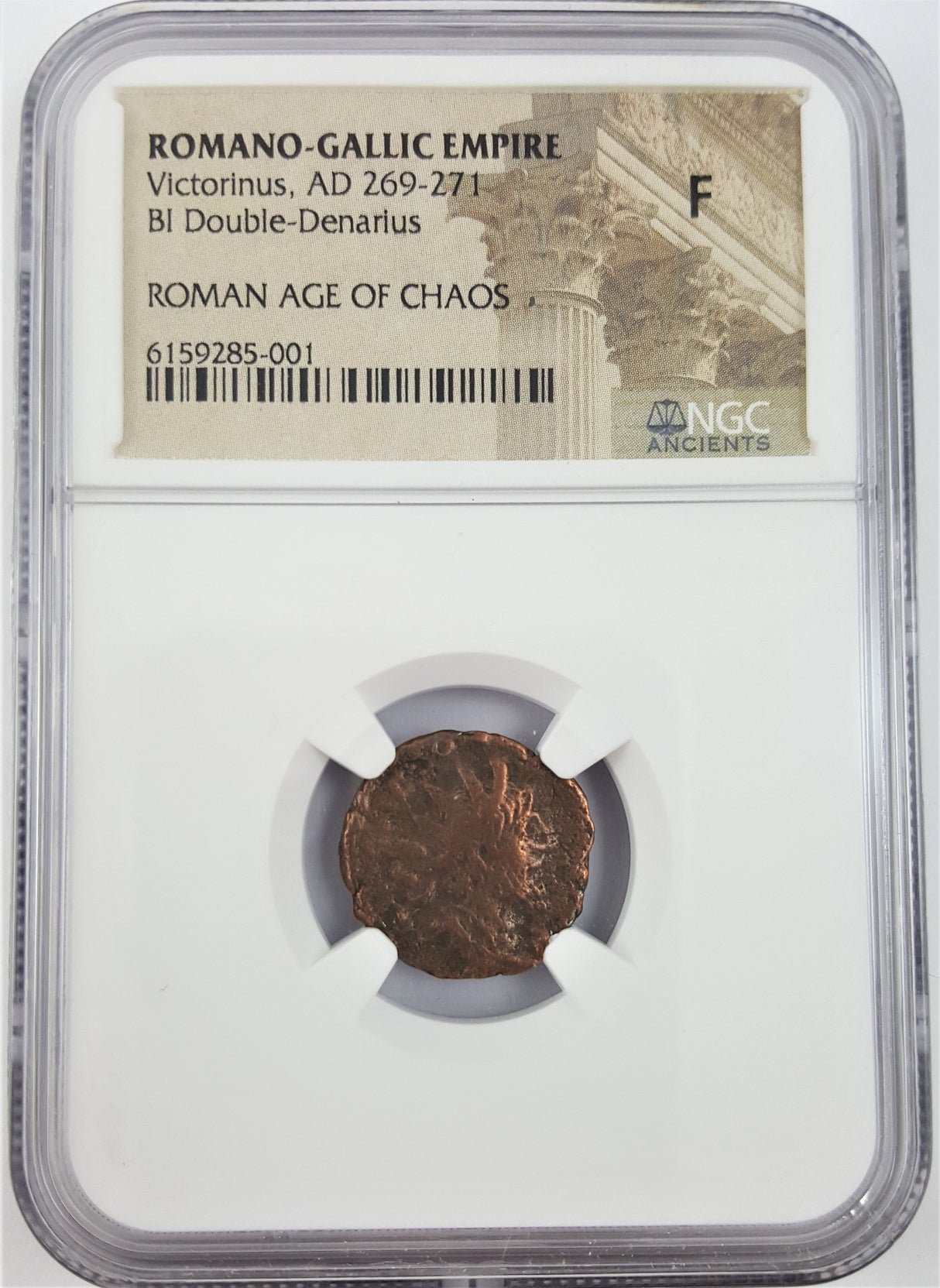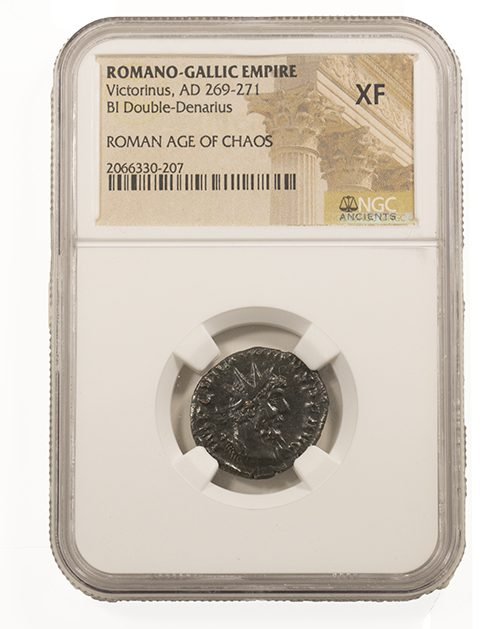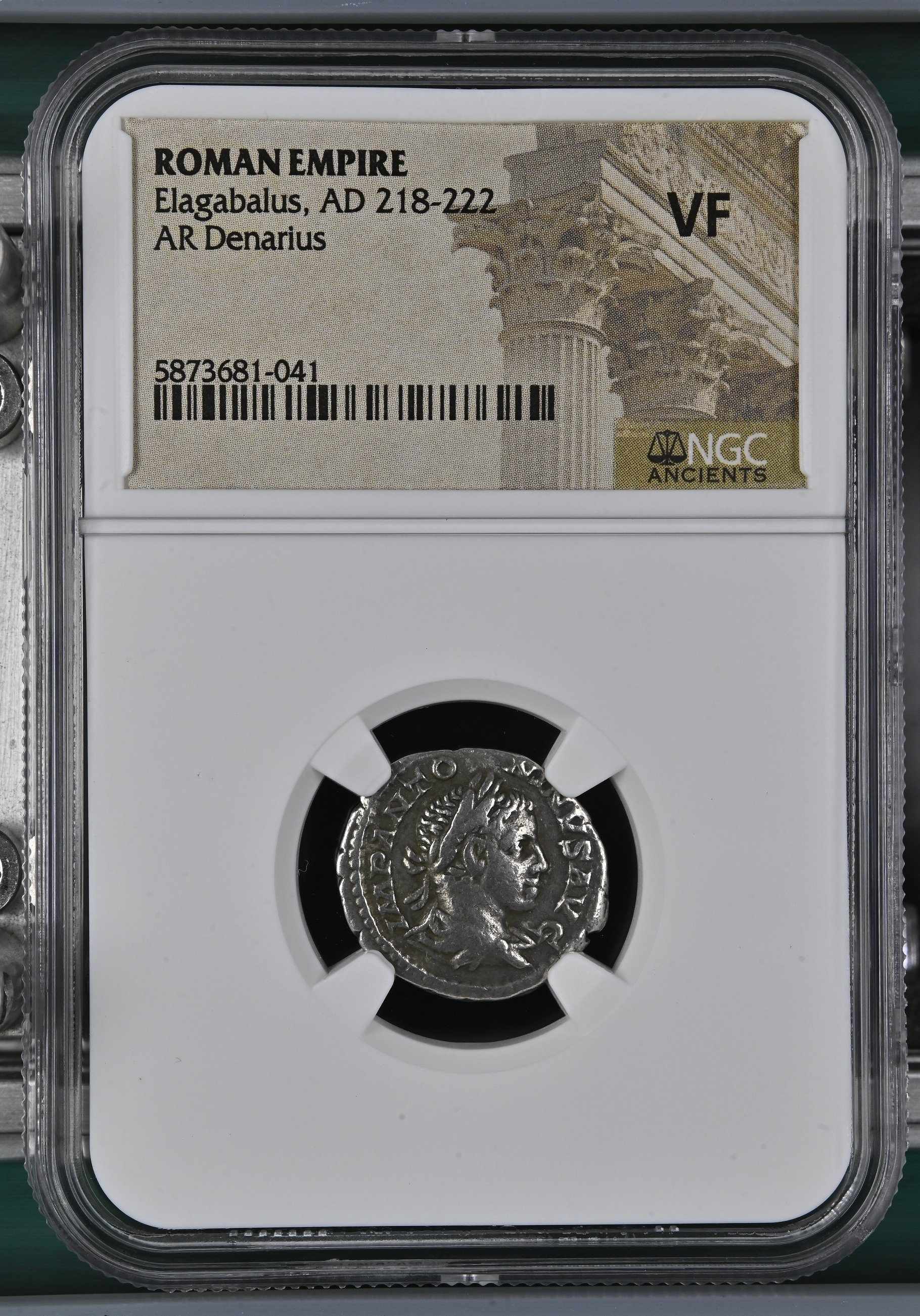 Image 1 of 4
Image 1 of 4

 Image 2 of 4
Image 2 of 4

 Image 3 of 4
Image 3 of 4

 Image 4 of 4
Image 4 of 4





Herennius Etruscus Roman Silver Denarius (about 1,770 years ago)
This silver denarius was minted during the brief reign of Herennius Etruscus, son of Emperor Trajan Decius, who was elevated to co-emperor shortly before his death in battle. As a silver denarius, this coin represents one of the standard silver denominations of the Roman monetary system during the tumultuous Crisis of the Third Century.
Coin Description:
Front side: Profile portrait of young Herennius Etruscus wearing a radiate crown, with his name and imperial titles in Latin around the edge
Back side: Likely depicts either personifications of Roman virtues, military symbols, or religious imagery common on coins of this period
Technical Details:
Silver composition
Denarius denomination (standard silver Roman coin)
NGC certified (Numismatic Guaranty Corporation)
Minted in 251 CE, during Herennius' brief period as Caesar and Augustus
Condition: Certified by NGC, specific grade not provided
Historical Significance: This coin represents the dangerous instability of the Roman Empire during the Crisis of the Third Century. Herennius Etruscus was elevated to co-emperor by his father Trajan Decius in early 251 CE, but both were killed later that same year at the Battle of Abrittus fighting against Gothic invaders in modern Bulgaria. This devastating defeat marked the first time a Roman emperor died in battle against foreign enemies and highlighted Rome's growing vulnerability to barbarian invasions.
This silver denarius was minted during the brief reign of Herennius Etruscus, son of Emperor Trajan Decius, who was elevated to co-emperor shortly before his death in battle. As a silver denarius, this coin represents one of the standard silver denominations of the Roman monetary system during the tumultuous Crisis of the Third Century.
Coin Description:
Front side: Profile portrait of young Herennius Etruscus wearing a radiate crown, with his name and imperial titles in Latin around the edge
Back side: Likely depicts either personifications of Roman virtues, military symbols, or religious imagery common on coins of this period
Technical Details:
Silver composition
Denarius denomination (standard silver Roman coin)
NGC certified (Numismatic Guaranty Corporation)
Minted in 251 CE, during Herennius' brief period as Caesar and Augustus
Condition: Certified by NGC, specific grade not provided
Historical Significance: This coin represents the dangerous instability of the Roman Empire during the Crisis of the Third Century. Herennius Etruscus was elevated to co-emperor by his father Trajan Decius in early 251 CE, but both were killed later that same year at the Battle of Abrittus fighting against Gothic invaders in modern Bulgaria. This devastating defeat marked the first time a Roman emperor died in battle against foreign enemies and highlighted Rome's growing vulnerability to barbarian invasions.
This silver denarius was minted during the brief reign of Herennius Etruscus, son of Emperor Trajan Decius, who was elevated to co-emperor shortly before his death in battle. As a silver denarius, this coin represents one of the standard silver denominations of the Roman monetary system during the tumultuous Crisis of the Third Century.
Coin Description:
Front side: Profile portrait of young Herennius Etruscus wearing a radiate crown, with his name and imperial titles in Latin around the edge
Back side: Likely depicts either personifications of Roman virtues, military symbols, or religious imagery common on coins of this period
Technical Details:
Silver composition
Denarius denomination (standard silver Roman coin)
NGC certified (Numismatic Guaranty Corporation)
Minted in 251 CE, during Herennius' brief period as Caesar and Augustus
Condition: Certified by NGC, specific grade not provided
Historical Significance: This coin represents the dangerous instability of the Roman Empire during the Crisis of the Third Century. Herennius Etruscus was elevated to co-emperor by his father Trajan Decius in early 251 CE, but both were killed later that same year at the Battle of Abrittus fighting against Gothic invaders in modern Bulgaria. This devastating defeat marked the first time a Roman emperor died in battle against foreign enemies and highlighted Rome's growing vulnerability to barbarian invasions.
Quintus Herennius Etruscus Messius Decius (died c. June 251), known simply as Herennius Etruscus, was briefly Roman emperor in 251, ruling jointly under his father Decius. His father was proclaimed emperor by his troops in September 249 while in Pannonia and Moesia, in opposition to Philip. Decius defeated Philip in battle, and was then proclaimed emperor by the Senate. Etruscus, still a child, was elevated to Caesar (heir) in 250, then further raised to Augustus (emperor) in May 251. When the Goths, under Cniva, invaded the Danubian provinces, he was sent with a vanguard, followed by the main body of Roman troops, led by Decius. They ambushed Cniva at the Battle of Nicopolis ad Istrum in 250, routing him, before being ambushed and routed themselves at the Battle of Beroe. Etruscus was killed in the Battle of Abritus the following year, alongside his father. After the deaths of both emperors, Trebonianus Gallus, who had been governor of Moesia, was elected emperor by the remaining Roman forces.
Quintus Herennius Etruscus Messius Decius was the son of Decius, a Roman general who later became emperor, and Herennia Etruscilla, his wife. His birth date is sometimes given between 220 and 230, but there is no way to confirm this. Etruscus was probably a young boy when he was proclaimed emperor in 251, as depicted in his coins.[1]




